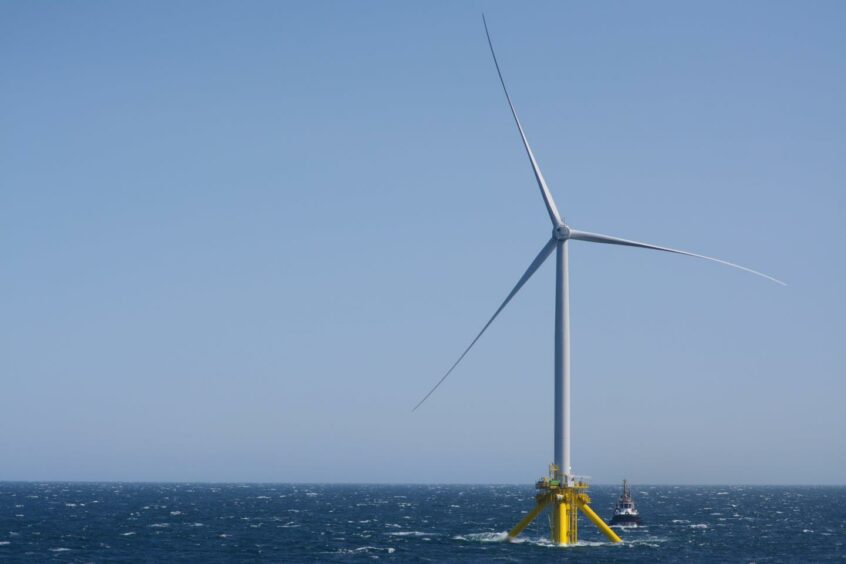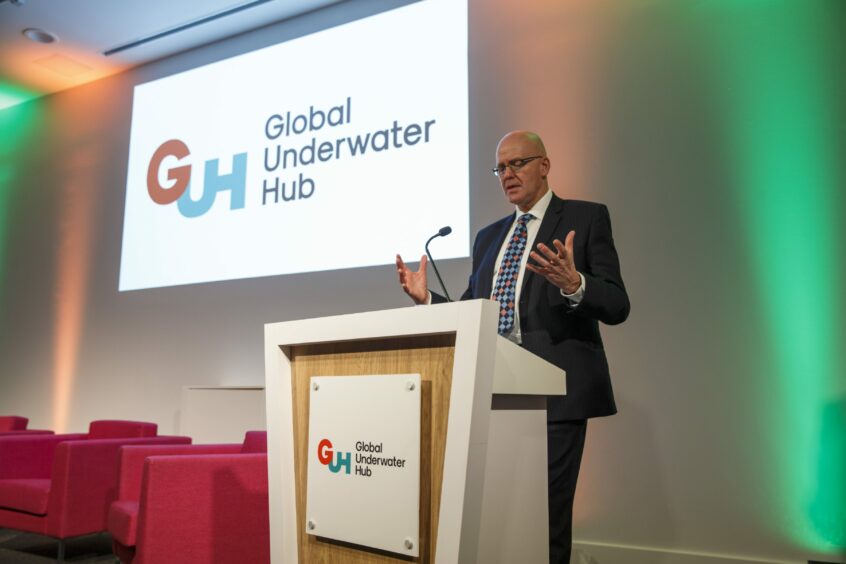
Global Underwater Hub to grasp “greatest opportunity for subsea in our generation”
There’s been much hand-wringing over the years about the loss of business for the UK in fixed offshore wind, when much of the fabrication ended up overseas and many of the developers were not UK-based. A UK Government report, four years ago, described the lack of UK firms in the offshore wind supply chain as a “missed opportunity” and stated that a more strategic approach was needed by government and industry in the future.
That future is here and, with it, comes a second chance – one that could be even bigger, particularly for the UK’s world-leading underwater industry. This second-coming is floating offshore wind and, thanks to our unrivalled underwater ingenuity and engineering, it’s where the UK can really make its mark if we grasp the opportunity and invest in the advancement of our already world-leading subsea experience, knowledge, expertise and technology.
The British Energy Security Strategy’s ambition to deliver up to 50GW of power from offshore wind by 2030 includes 5GW of floating wind, which is anticipated to rapidly increase beyond then.
By becoming a first-mover in floating offshore wind at scale, the UK will be well-placed to capitalise on the plethora of floating wind projects that will swiftly follow around the globe.
The scale of what is planned in UK waters, through Scotwind, is unprecedented and signals one of the biggest industrial opportunities for decades. Crown Estate Scotland outlined almost £25 billion of planned investment into the Scottish economy across ScotWind projects. The total financial investment in the supply chain across these projects is £66 billion, of which around 40% is ring-fenced to be spent in Scotland. Eleven of the 17 projects will be using floating wind turbines and almost 80% of the £25 billion invested in Scotland will be dedicated to floating wind.
And this is before we factor in INTOG (Innovation and Targeted Oil & Gas) – another seabed leasing round which will attract bidders to apply for the rights to build offshore windfarms for the purpose of decarbonising oil and gas production in the North Sea by providing clean, green energy to electrify platforms. It is anticipated that, due to the urgency in meeting North Sea Transition Deal targets, INTOG projects could get underway first and pave the way for Scotwind projects.
Determined the country doesn’t lose out this time, the UK Government has issued a Request for Information (RFI) to port developers, floating wind foundation designers and fabricators, component and sub-component manufacturers, floating offshore wind developers, EPCI contractors, trade bodies and academia. The responses will inform government of both the opportunities available and the capabilities and capacity in the supply chain and allow them to gauge where investment can have the biggest impact.
Through the Floating Offshore Wind Manufacturing Investment Scheme (FLOWMIS) up to £160 million will be made available to scale-up the deployment of floating offshore wind and to invest in key areas where we have competitive advantage. With our world-leading status and marketshare, the subsea industry clearly has an edge here.
Floating offshore wind represents the greatest opportunity for the subsea industry this generation. The underwater elements of manufacturing, assembling, installing and then operating and maintaining floating offshore wind projects are eminently transferable from offshore oil and gas, where subsea expertise was, largely, honed and refined.
From floating foundations to mooring and anchoring systems, as well as dynamic power cables, the subsea industry will be integral to delivering floating wind. And it’s not just these obvious, largescale fabrication and manufacturing elements, it’s also all the skills and technologies, components and sub-components which will be required further down the line.
Global Underwater Hub is building a robust case for government to support the subsea industry as an enabler with the greatest potential to deliver UK capability in floating wind. Part of this has been our call to the underwater industry to participate in the RFI, which closes on the 15th of July and I’d stress the importance of doing this to all subsea companies.
But, more importantly, we are working closely with government agencies to identify the key areas of expertise and technology in which to invest. It’s crucial that the UK and Scottish governments know how to support the industrial investment required to ensure the UK supply chain meets the ambition and pledges made by the successful bidders in Scotwind and INTOG.
Another major task for us is making sure that the underwater industry has visibility of these projects and to facilitate relationships between them and the developers leading on these.
But we’re not just a go-between, Global Underwater Hub will be the go-to organisation, not just for subsea companies looking to capitalise on the opportunity presented by floating offshore wind but also for government in terms of knowing where and when to invest in order to build out capability and capacity and accelerate the massive scale-up that will be required to take full advantage of the biggest industrial opportunity in the North Sea in decades.
The Global Underwater Hub (GUH) is a new strategic, intelligence-led membership organisation that will transform the UK’s £8bn underwater industry into one of the largest and fastest-growing industries in the country. The organisation will harness the UK’s combined underwater expertise in engineering, environmental science, technology, services and skills, to enable companies to suc-cessfully compete in the underwater sectors of offshore energy, defence, aquaculture, telecoms, and subsea mining. Further information about the Global Underwater Hub can be found at www.globalunderwaterhub.com.
Recommended for you

 © Supplied by GUH/ Newsline media
© Supplied by GUH/ Newsline media